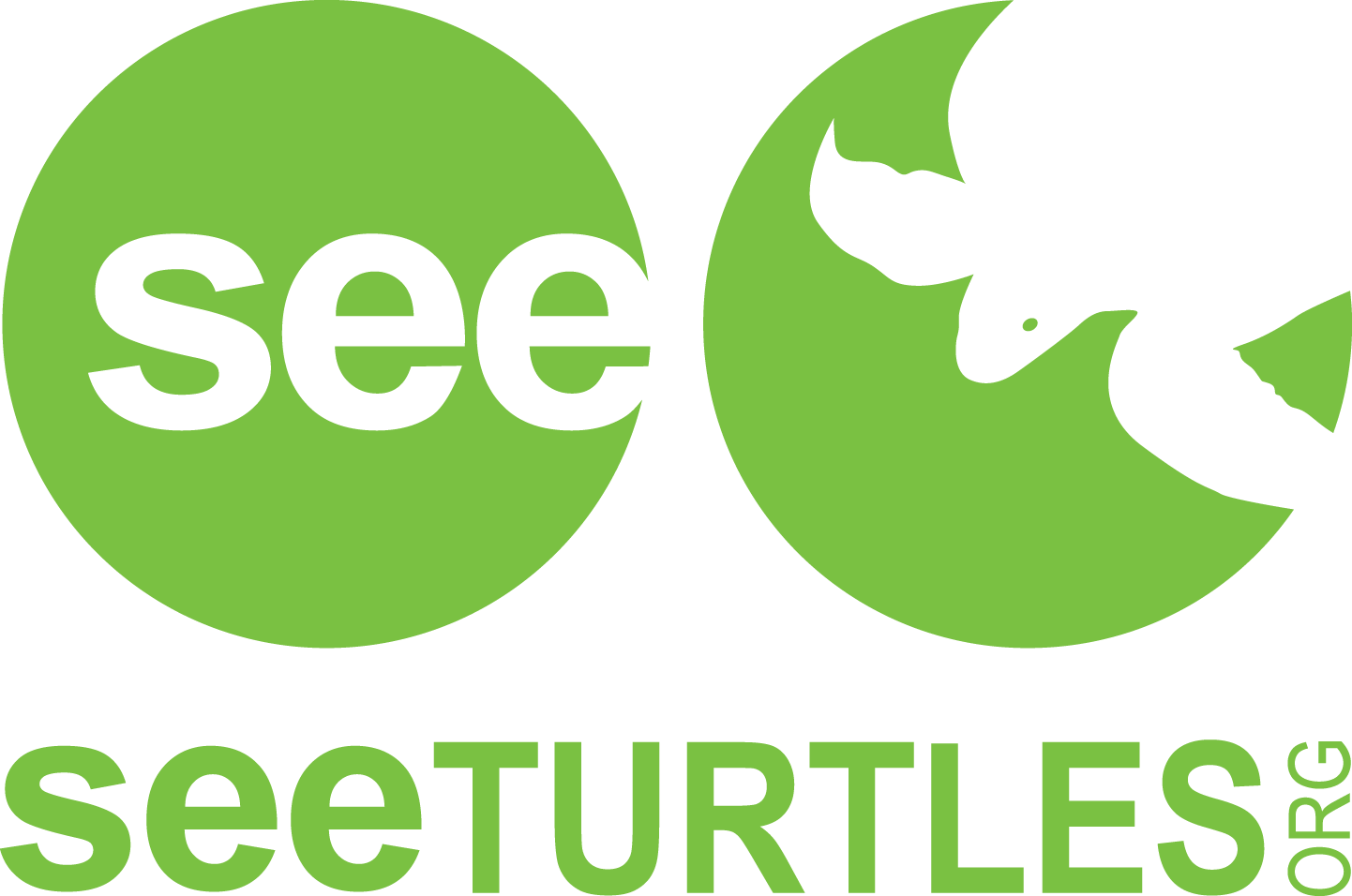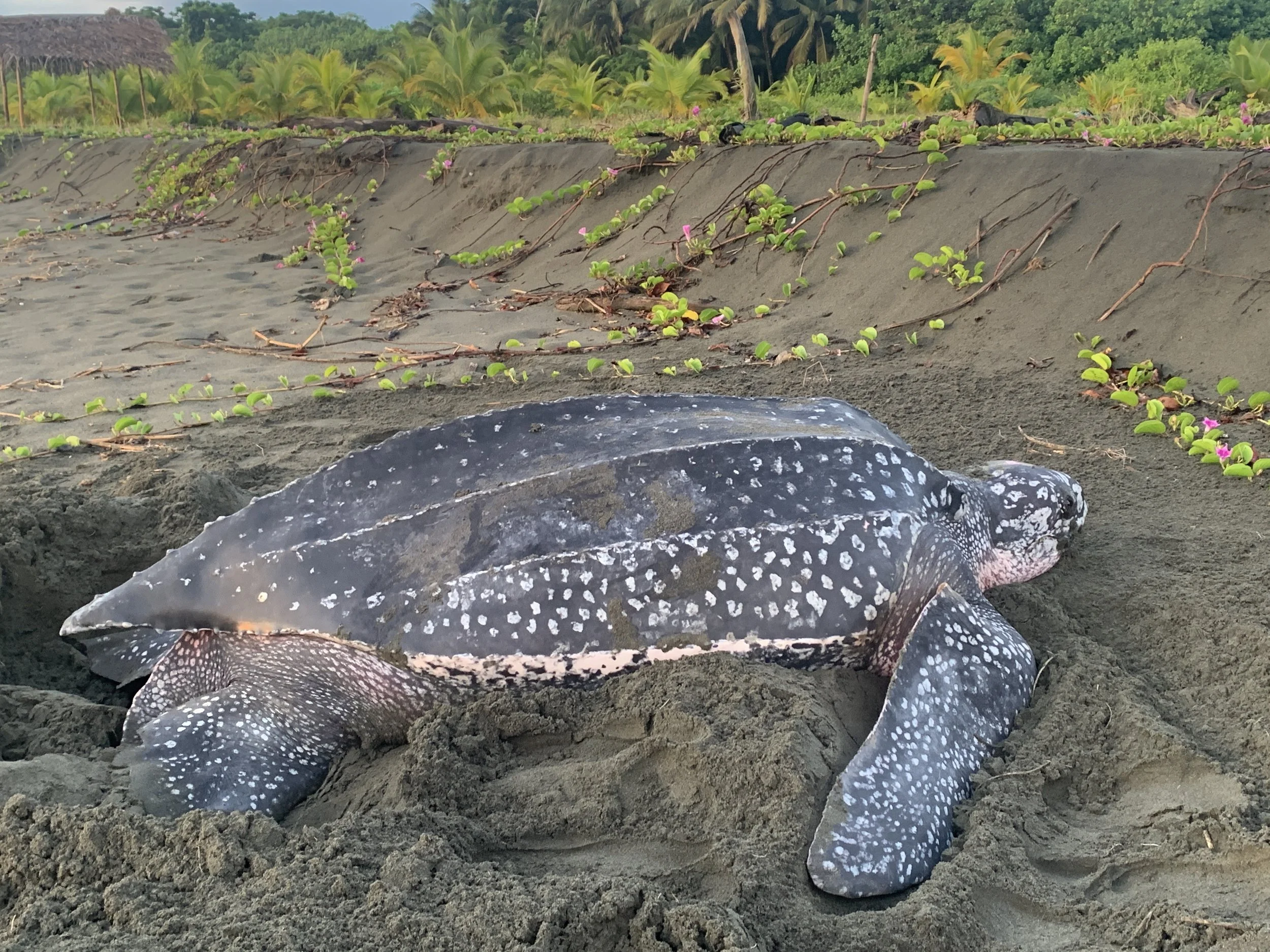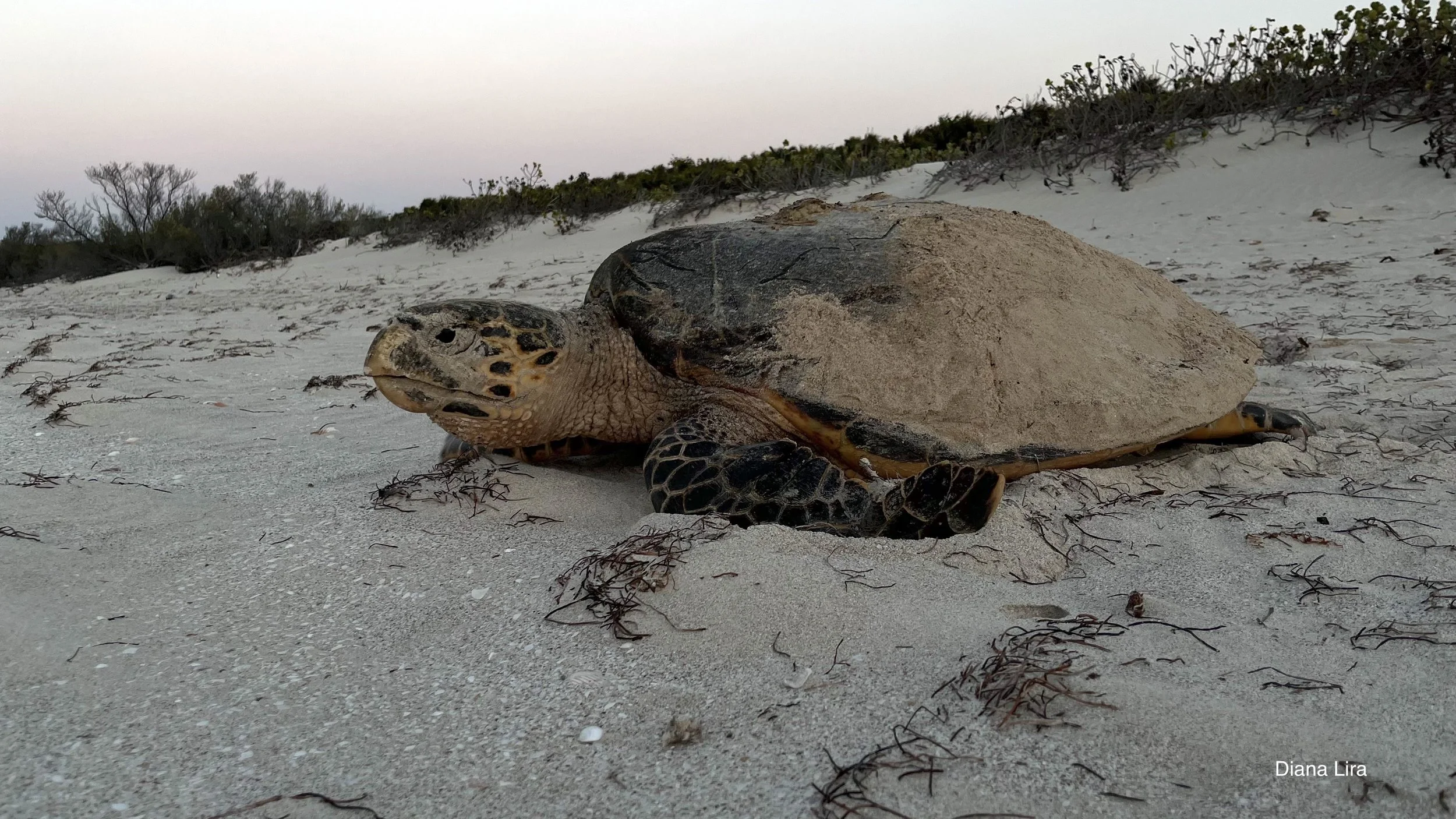July Billion Baby Turtles Update
It’s been a busy time! This trimester we have given a total of US $67,000 in 17 grants, with 4 new partners.
With a total of US $90,000 so far, our grants for this first half of the year expect to help around 336,343 baby turtles to get to the ocean. Here are the grants we have provided over the past three months.
Yayasan Penyu Laut Indonesia /Indonesia Sea Turtle Foundation, Pesemut Island, Indonesia
Since 1999 ISTF has done nesting beach conservation and eggs protection for critically endangered hawksbills as well as green turtles at Presemut Island in Indonesia. Most of the work is focused on preventing illegal nest collection and predation. Last season YPLI were able to protect 838 nests of hawksbill and 716 of green turtles. This year Billion Baby Turtles is supporting this project with US$ 4,000 and expects to help more than 57,000 baby hawksbill and green turtles to get into the ocean.
Sea Turtle Conservancy
Bastimentos National Park, Panama
After more than 20 years of sea turtle research in Bocas del Toro Province, Drs. Anne and Peter Meylan formed a partnership with STC in 2003 to monitor increasing nesting hawksbills along the Bocas coast (covering ~50 km of beach in recent years). The area of concentrated work by the Meylans has been three important nesting beaches: Small Zapatilla Cay, Big Zapatilla Cay (both since 2003), and Playa Larga (since 2006), all of which lie completely within the boundaries of the Bastimentos Island National Marine Park (BINMP). Nighttime patrols are also carried out to intercept and tag nesting females on these beaches. Both activities are conducted by beach monitors hired from local native communities with help during most years from international student volunteers; all are trained by the PI’s or by experienced field coordinators. In the last 8 years and thanks to the protection of the area, the number of nests have been increasing from 688 in 2014 to more than 1,200 last season. With US $5,000, Billion Baby Turtles supported the protection of more than 16,000 baby hawksbills.
Soropta Beach, Panama
This project is to address on-going threats facing the leatherback population at Soropta Beach, Panama, while carrying out an in-situ research and recovery program. The 14-km Beach hosts between 200 – 1,200 leatherback nests per year, making it one of the most densely nested beaches for this species in the region. Unfortunately, illegal hunting of leatherback nests remains an issue at Soropta, due to its isolated location, relative ease of access and cultural tradition of sea turtle egg and meat consumption in the area. STC is implementing a two-pronged approach to curtail illegal egg taking: implementing a hatchery and directly housing law enforcement personnel at STC’s Biological Research Station. For this season Billion Baby Turtles support this project with US $4,000 helping to get into the big blue at least 1,600 baby leatherbacks. Plus supplementary income with one of our conservation trips to this station.
Leatherback turtle at Soropta Beach, credit SEE Turtles
Ocean Foundation: Guanahacabibes National Park
Eight beaches are patrolled during the nesting and hatchling seasons (May to October) in Guanahacabibes Peninsula. As for green turtle nesting population, it is the second largest of the archipelago and also exhibits high levels of hatching success. Billion Baby Turtles support this organization with US $4,000 for this season, helping approximately 7,000 baby turtles to get to the big blue.
Everlasting Nature, Kimar Island, Indonesia
This organization in Kimar Island,Indonesia, helps protect hawksbill turtles and the recovery of this population. This island used to have a big problem with illegal taking of nests, this is the main reason for the establishment of this project. Everlasting Nature hires local people as “eggs guardians”, walking the beach every morning and collecting nesting data. They conduct this this project with Indonesia Sea Turtle Research Foundation (Yayasan Penyu Laut Indonesia/ YPLI) as partner. This is a very important area for the endangered hawksbill turtles, they protect around 700 nests per season. They also have few green turtle nests on this island. Our Billion Baby Turtle program supported them with US$ 5,000 for this season and hope they can protect more than 35,000 baby turtles.
ProNatura Yucatán, Mexico
ProNatura Yucatan safeguards 3 of the Yucatan Peninsula's most vital nesting beaches, including Celestun and Holbox, which are key hawksbill nesting sites. The field season spans from early April to late October, during which the team surveys 79 km nightly to document female turtles and nests. They also conduct educational visits to local schools. Last season, the 3 beaches saw a total of 3,229 hawksbill nests, 4,331 green turtle nests, and 5 leatherback nests. Due to loss of US government financial support, we were able to get US $10,000 extra in funding this season. The Billion Baby Turtles initiative aims to support over 33,000 more hatchlings reaching the ocean.
Hawksbill turtle nesting at El Cuyo
Latin America Sea Turtles (LAST): Cahuita & Moin Beaches, Costa Rica
Pacuare North
The Caribbean shoreline is also one of the most important nesting locations for leatherback and green turtles. The beach of Pacuare north, counts between 300-500 leatherback nests and 100-150 green turtle nests in a regular season. Local protection in Pacuare is crucial and also benefits sea turtle conservation programs in neighboring countries as it aims at the same turtle population. Pacuare beach also registers between 5-15 nests each season of the critically endangered hawksbill turtle. Without any protection efforts whatsoever, many nests and even adult turtles would be lost for illegal practices that are still common in this area. Billion Baby Turtles supported this project with US $4,000 and hope to help at more than 700 baby turtles to get to the ocean
Cahuita
Since 2000 ANAI and LAST nonprofit organizations have worked for the protection and conservation of nesting hawksbill and green females and baby sea turtles in Cahuita Beach. During the last decade it was estimated that 90% of the nests at this beach were lost by wildlife predation, illegal egg collectors, or washed out by the ocean. Cahuita’s nest population represents one of the highest numbers reported for Caribbean hawksbill turtles in Costa Rica. For this season, through our Billion Baby Turtles program supported this project with US$ 3,500 to help more than 3,500 baby turtles.
Ecosystem Impact, Bangkaru Island, Indonesia
This non-profit organization works in Bankaru Islands protecting especially green turtles and sporadic nesting leatherbacks. In addition to the protection of nesting turtles, Ecosystem Impact develops law enforcement capacity, campaign and advocacy work, community awareness, rangers training and social media education, all of these programs have as a goal the increase of global awareness of the conservation of marine turtles and other wild species included in the Bangkaru Project. They work with community rangers and campaigns in all the local communities surrounding the project. With US$ 5,000 our Billion Baby Turtles program supported Ecosystem Impact for this upcoming season, expecting to protect more than 5,600 baby turtles to get to the ocean.
Researchers measuring a leatherback turtle. Photo: Ecosystem Bumi
Ayotlcalli, Ixtapa, Mexico
Campamento Tortuguero Ayotlcalli was founded in September of 2011 with the purpose of protecting and help increase the population of three species of marine turtles that nest within 15 kilometers of beaches that include Playa Blanca, Playa Larga and Barra de Potosi in Zihuatanejo. This year, this program won the Grassroot award during the 42 International Sea Turtle Symposium!! Congratulations to Damari and all her team for the great work they are doing! Billion Baby Turtles supported Ayotlcalli with US$ 2,500, helping to protect the 3 different species that nest on these beaches (olive ridleys, leatherbacks and black turtles) and more than 8,000 baby turtles.
SOS Nicaragua, Los Brasiles, Nicaragua 2,000
Since 2019, Sos Nicaragua has been independently implementing conservation efforts on the island of Los Brasiles, starting a permanent sea turtle protection programme that extends to all recorded nesting species. They have developed a conservation model in harmony with turtle egg harvesters, raising local awareness, protecting critical sea turtle habitats and generating new sources of financial sustainability for local families in long-term project goals. The average number of nests protected annually usually exceeds 100, mostly nests of ridley turtles. Billion Baby Turtles has been supporting this project since 2017, this year with US $2,000 we hope to help almost 2,000 baby turtles.
New Billion Baby Turtles Partners
Bahari Hai, Watamu, Kenya
The 5km Watamu Marine Protected Area beach has had long-term, intensive monitoring & protection as an index nesting beach. However, outside of this Marine Park there has been significantly illegally taken and increased threats to nesting sea turtles. These unprotected sites have great potential. The team have identified 7 nesting beaches over a 30km area that want to validate for longer-term nest monitoring & protection. With US $2,000 we supported Bahari Hai to explore those understudied beaches along with an additional $1,000 donation through our upcoming Kenya Coast & Safari trip.
Green turtle nesting at Watamu Beach. Photo: Bahari Hai
The Leatherback Project, Guna Yala, Panama
The Leatherback Turtle (Dermochelys coriacea) Nesting Ecology Project at Armila Beach, Guna Yala, Panama, focuses on the study and conservation of this vulnerable species. This project addresses two significant threats impacting the nesting ecology of the leatherback sea turtle at Armila Beach: coastal erosion and plastic debris pollution. Coastal erosion caused by natural processes reduces suitable nesting areas, jeopardizing hatchling survival. Plastic pollution poses a serious threat to the health of the turtles and their environment. Addressing these threats is important to ensure the conservation of this species. With US $3,000 we expect to help to protect more than 3,000 baby leatherbacks.
Costa Rican Alliance for Sea Turtle Conservation & Science, Playa Gandoca, Costa Rica
COASTS is on a mission to prevent the extinction of sea turtles and protect their natural habitat through scientific research, data-driven conservation actions, habitat restoration, and environmental education. This is a passionate and dedicated team of local assistants, scientists, students, conservationists, citizen scientists, and volunteers. From March until October, this project conducts nightly beach patrols to encounter nesting females (primarily leatherbacks and hawksbill). From November until January, they conduct morning surveys to take care of the remaining incubating nests and to continue to do nest inventories, once they hatch. The goal is to monitor the three nesting populations long-term and to protect the females and their eggs from illegal harvest and beach erosion. We supported this project for the first year with US $3,000 for this upcoming season.
Salvemos Isla Ixtapa, Isla Carey, Guerrero, Mexico
This project started in 2011 and its mission is to protect and conserve sea turtle nests, primarily hawksbill turtles, as it is currently the most important nesting site in the Mexican Pacific. They also conduct environmental education talks and workshops for the general public and schools that visit us on the island. With US $1,000 we hope to help more than 3,000 baby hawksbills to get to the ocean.
Barreros de San Luis, Guerrero, Mexico
Our new partner: Barreros de San Luis, located in the municipality of Técpan de Galeana in the state of Guerrero, Mexico, is made up of more than 40 local people who support the protection and conservation of sea turtles. They protect the critically endangered pacific leatherback, and also the vulnerable green (locally known as black turtle) and olive ridley sea turtles. The main threat in this area is illegal hunting of eggs and adult turtles. For almost 10 years they have protected 90% of leatherback turtle nests in their hatchery and the rest are protected both: in situ and in the hatchery. With the efforts of all collaborators and with good management practices, more than 80% of hatching success in the 3 species has been achieved. They may protect up to 3,500 nests of olive ridleys, 150 nests of leatherbacks and 50 nests of black turtles. With US $5,000, we expect to help them protect around 62,500 baby turtles.
Los Quelonios, Guerrero, Mexico
Another new partner this month, is Chelonios, located in the town of Playa Ventura in the municipality of Copala, Guerrero, Mexico, in which 15 people belonging to the Afro-descendant community participate and dedicated to the protection and conservation of the 3 species of sea turtles that nest on this beach. For almost 15 years they have protected more than 80% of olive ridley turtles and more than 90% of leatherback and black turtle nests. Unfortunately, this community continues to face the illegal taking of nests and the killing of adult turtles by people from surrounding communities who sell eggs, meat and other derivatives such as turtle blood and oil for consumption. Additionally, there are a large number of dogs on this beach, which prey on the nests, hatchlings and can considerably injure some adult nesting turtles. Billion Baby Turtles is supporting this project with US $4,000, and expects to help almost 40,000 baby turtles to get to the ocean.




